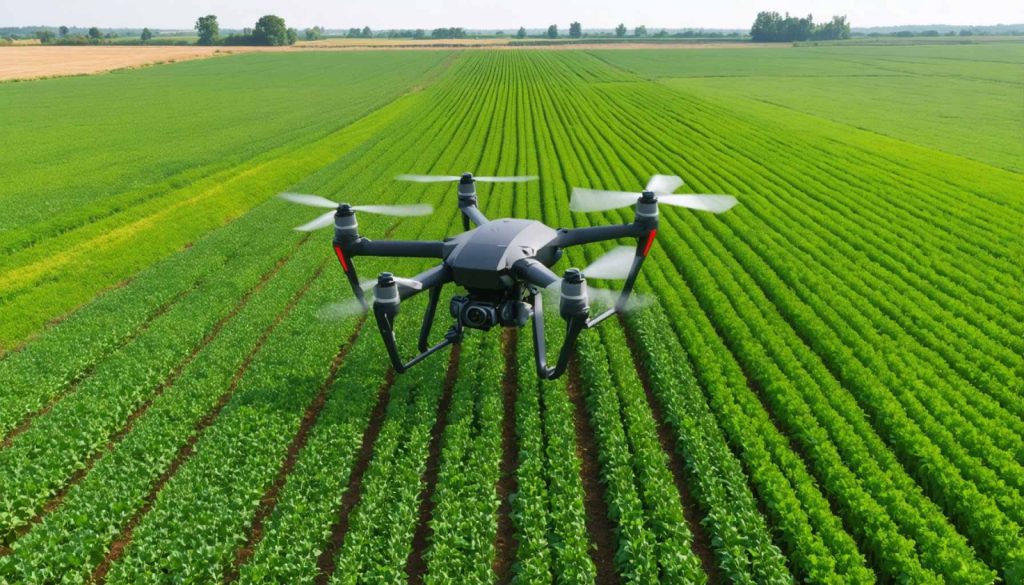
- Drones Revolutionize Farming: Tevel’s Flying Autonomous Robots use AI and computer vision to precisely harvest ripe fruit, transforming traditional agriculture.
- Labor Efficiency: The technology offers up to a 30% reduction in labor costs, allowing 24/7 operation and optimizing harvest schedules via real-time data on smartphones.
- Global Adoption: Advanced farming techniques are embraced in diverse regions including the U.S., Italy, Chile, and Israel.
- Innovations Beyond Harvesting: UC San Diego’s GRIP-tape gripper, inspired by tape measures, aims to enhance post-harvest handling for delicate fruits.
- Future Prospects: Balancing technology with traditional labor remains crucial, with agritech innovations promising to harmonize efficiency with the human touch in farming.
Amid the rolling fields and sprawling orchards, a quiet transformation is underway. Imagine drones wafting like bees, flitting through apple orchards, their mechanical arms gently coaxing ripe fruit from tree branches. This scene isn’t a glimpse into a sci-fi future but a present-day reality as farming technology leaps forward, with trailblazers like Tevel’s Flying Autonomous Robots leading the charge.
Tevel’s drones blend cutting-edge artificial intelligence with sophisticated computer vision, discerning the perfect moment of ripeness before making their move. They navigate through the labyrinth of branches with dexterity, ensuring that each piece of fruit is harvested without the shadow of a bruise or scratch. Farmers, once tethered to the grueling rhythm of seasonal labor, now wield the power of 24/7 operation. These machines work tirelessly, showering the fields with precision and efficiency, harvesting at an unprecedented speed.
The benefits extend beyond simple labor savings—up to a 30% reduction in labor costs, to be exact. Real-time data streams from the drones to farmers’ smartphones, cataloging the size, hue, and ripeness of each fruit, optimizing the schedule of harvests and minimizing waste. Pioneering orchards across continents, from the fruitful states of the United States to the scenic stretches of Italy, to the fertile valleys of Chile and Israel, have already embraced this technology.
Yet, the innovation doesn’t stop at harvesting. After the fruit is plucked from trees, UC San Diego’s GRIP-tape gripper presents a tantalizing peek into the future of post-harvest handling. Drawing inspiration from the humble steel tape measure, this experimental device uses motorized layers to cradle each fruit tenderly. Although still in testing phases, the potential to transfer delicate tomatoes or citrus without harm is intriguing. The vision: a system safe for human interaction, economically viable, yet sophisticated enough to integrate seamlessly into current packing lines.
As this symphony of drones and grippers plays out across the world’s farms, the question arises—are we marching towards a future where technology supplants traditional labor, or can these advances coexist, providing balance and sustenance? While the drones have proven their mettle, the GRIP-tape paves a gentle path forward, weaving a narrative of smart, safe handling yet to fully unfold.
In this dance between the tangible and the theoretical, the immediate impact of Tevel’s drones showcases the art of the possible, while the experimental models inspire dreams of what might yet come. As agritech continues to propel us into new realms, the challenge—and the opportunity—lies in striking a balance, harmonizing innovation with the human touch that farming has known for centuries. The fields may still be quiet, but their story is anything but.
The Future of Farming: How Drones and Robotics are Revolutionizing Agriculture
New Agricultural Tools: Beyond the Drone
In the world of agriculture, technology is setting a new pace. At the forefront is Tevel’s revolutionary Flying Autonomous Robots, poised to transform how we think about harvesting. However, hidden beneath the excitement are details and broader implications that delve deeper into the agritech revolution.
How Drones Are Changing Farming
Tevel’s drones utilize advanced artificial intelligence and computer vision to identify fruit ripe enough for harvest. This technological marvel allows for precision harvesting, reducing bruising and increasing the quality of the yield. Each drone is equipped with mechanical arms that delicately pluck fruit from trees—a process that has traditionally required intensive labor.
Benefits of Drone-Assisted Harvesting
– 24/7 Operation: Drones can work around the clock, which boosts productivity and ensures that harvests occur at the optimal time.
– Labor Cost Reduction: Up to a 30% reduction in labor costs is reported, freeing farmers from the constraints of seasonal labor.
– Real-Time Data Analytics: The data collected by drones (size, color, ripeness) informs when and how to harvest, reducing waste and improving efficiency.
Looking Ahead: Automated Post-Harvest Handling
Current research, such as UC San Diego’s GRIP-tape gripper, hints at future developments in fruit handling. This technology, inspired by retractable tape measures, promises to handle fruits like tomatoes and citrus without causing damage.
Future Possibilities
– Integration with Packing Lines: Once developed fully, this technology could integrate into existing packing processes, minimizing human error and enhancing efficiency.
– Safe Human Interaction: With safety as a priority, these technologies aim to coexist with human labor, ensuring a collaborative workflow.
Challenges and Opportunities
While automation offers numerous advantages, it brings challenges that need addressing:
– Job Displacement: The potential for reducing traditional labor roles requires careful consideration.
– Economic Viability: Technologies must remain cost-effective for widespread adoption.
Market Forecasts and Trends
The global market for agricultural drones is expected to grow significantly over the next few years. According to Research and Markets, the agricultural drone market is projected to reach $5.7 billion by 2025, demonstrating strong industry confidence in drone technology.
Recommendations for Farmers
– Embrace Technology: By incorporating drones, farmers can increase efficiency and reduce costs.
– Invest in Training: Understanding how to operate and maintain new technologies will be crucial.
– Evaluate Sustainability: Review the environmental impact of tech adoption to ensure long-term sustainability.
For readers interested in more about agricultural technologies, feel free to explore Tevel and UC San Diego.
Integrating technology with agriculture promises a future where efficiency meets tradition, but how we navigate the challenges ahead will define the success of this symbiotic relationship.



